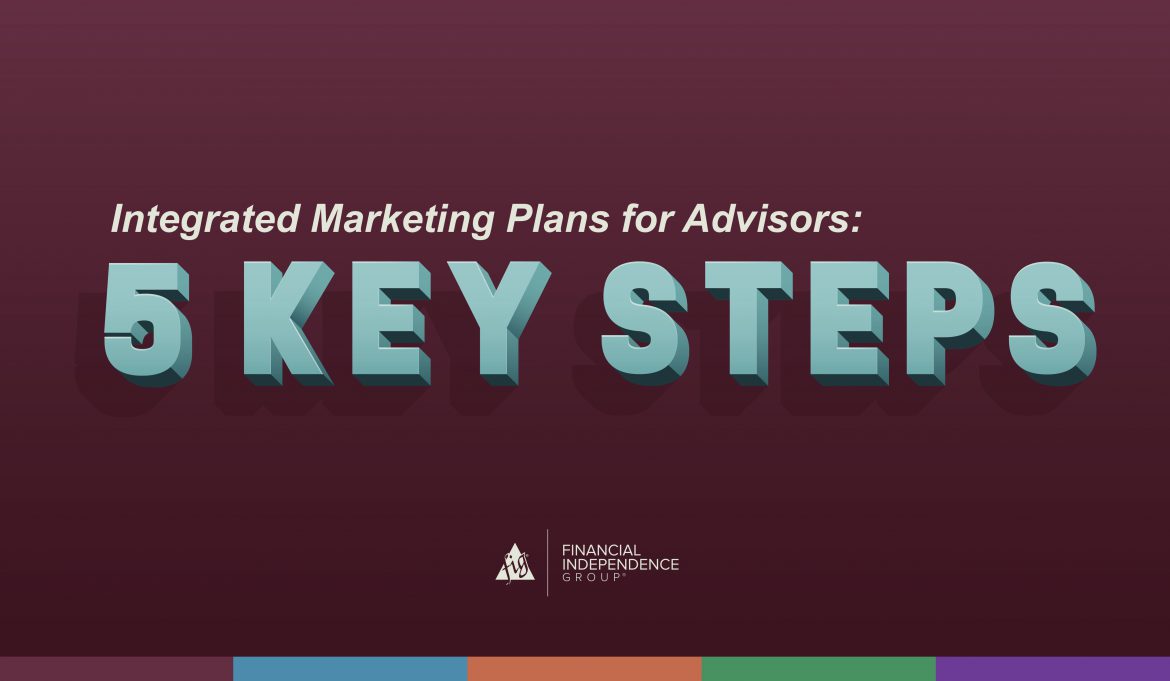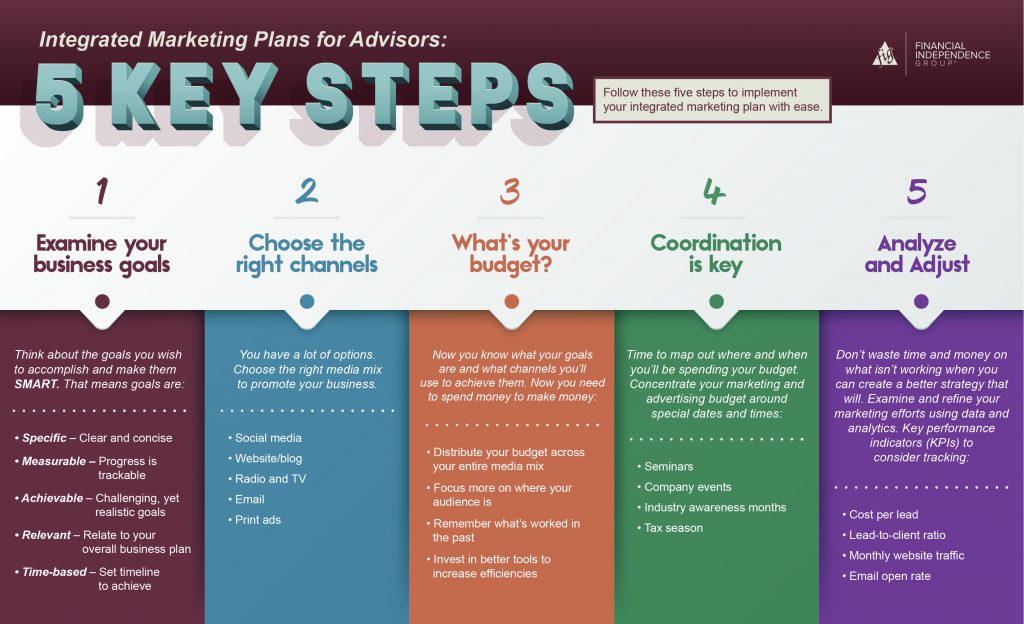Updated on September 6, 2023, at 7:21 AM
Developing integrated marketing plans for advisors isn’t always easy.
It’s a challenge to find the right mix of media, budget, and coordination to pull off a successful integrated marketing plan.
Sure, some advisors can get away with only doing direct mail or seminar marketing. Maybe a few can simply advertise and appear on radio. Some may even rely solely on brochures and word-of-mouth.
But in today’s financial landscape, the advisors who thrive are the ones that incorporate it all. Advisor marketing success comes from a diversified approach, a mix of all those marketing components that together are greater than any one part. In other words, integrated marketing.
When you begin planning for your integrated marketing strategy, there are many different options and approaches you can take. To narrow your focus, we’ve clarified the five key steps to your next integrated marketing plan.
Follow these and you may just realize your most effective marketing plan to date.
Download Now: Integrated Marketing Plans for Advisor: 5 Key Steps
Step 1: Examine Your Business Goals
To start, think about the goals you wish to accomplish and make them SMART.
That means your goals are:
- Specific – Clear and concise
- Measurable – Progress is trackable
- Achievable – Challenging, yet realistic goals
- Relevant – Relate to your overall business plan
- Time-based – Set timeline to achieve
Step 2: Choose the Right Channels
The next step is choosing which channels you’ll pursue. And let’s just say you have a TON of options. Choose the right media mix to promote your business.
Here are a few media examples:
- Social media
- Website and blog
- Radio and TV
- Print ads
Related: Financial Advisor’s Social Media: Dos and Don’ts
Step 3: What’s Your Budget?
You now know what your goals are and what channels you’ll use to achieve them. Next, it’s time to set up your budget. Because in order to make money, you often need to spend it first.
Thoughts to keep in mind when budgeting:
- Distribute your budget across your entire media mix
- Focus more on where your audience is
- Remember what’s worked in the past
- Invest in better tools to increase efficiencies
Step 4: Coordination is Key
After you know your budget, it’s time to start mapping out where and when you’ll be spending your budget. Concentrate your marketing and advertising budget centered around special dates and times.
A few examples being:
- Seminars
- Company events
- Industry awareness months
- Tax season
Related: Seminar Marketing Tips for Better Customer Engagement
Step 5: Analyze and Adjust
Lastly, don’t waste time and money on what isn’t working when you can create a better strategy that will. Examine and refine your marketing efforts using data and analytics.
Key performance indicators (KPIs) to consider tracking:
- Cost per lead
- Lead-to-client ratio
- Monthly website traffic
- Email open rate



